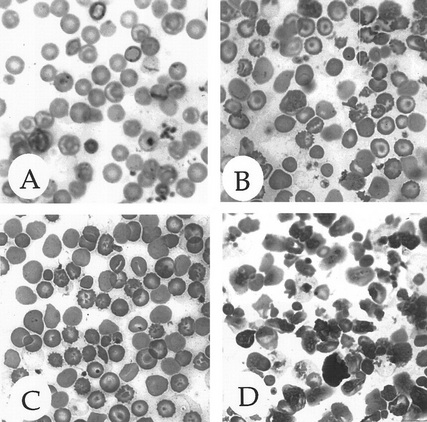This page was produced as an assignment for Genetics 677, an undergraduate course at UW-Madison.
RNAi and Model Organisms
Using the C. elegans RNAi database Phenobank, I searched for phenotypes caused by knocking down HBA1 expression in worms. Since there is no direct homologue of HBA1 in worms, I tried a search for globins. The search revealed that RNAi has been used against 16 of the 33 globins in C. elegans (See Protein Domains), but none of them exhibited any phenotype. [1] Since C. elegans do not have complex circulatory systems and therefore no homologues of the HBA genes, using RNAi to knock down expression of globins is not an appropriate model for human α-thalassemia.
To determine whether any animal models of α-thalassemia had been developed in more complex systems, I searched for the mouse homologue Hba-a1 in the Mouse Genome Informatics database. I found that two strains of Hba-a1 knockout mice have been generated. These knockout mice have symptoms mimicking human α-thalassemia. Deleting both mouse alpha hemoglobin genes gives symptoms similar to hydrops fetalis. [2] The phenotype of the erythrocytes in one of these knockout mice is shown below [3].
To determine whether any animal models of α-thalassemia had been developed in more complex systems, I searched for the mouse homologue Hba-a1 in the Mouse Genome Informatics database. I found that two strains of Hba-a1 knockout mice have been generated. These knockout mice have symptoms mimicking human α-thalassemia. Deleting both mouse alpha hemoglobin genes gives symptoms similar to hydrops fetalis. [2] The phenotype of the erythrocytes in one of these knockout mice is shown below [3].

Panel A shows erythrocytes from a mouse with wild-type copies of both α-globin genes. B shows blood cells from a mouse with a ζ-globin (embryonic) null genotype, and C and D are blood cells from Hba-a1 null mice in two different genetic backgrounds. Hemolytic red blood cells can be seen in B-D. [3]
References
- Phenobank. The Max Planck Institute of Molecular Cell Biology and Genetics (MPI-CBG), Dresden, Germany. [March 2011].
- Mouse Genome Database (MGD) at the Mouse Genome Informatics website, The Jackson Laboratory, Bar Harbor, Maine. [March 2011].
- Mouse zeta- and alpha-globin genes: embryonic survival, alpha-thalassemia, and genetic background effects.Leder A, Daugherty C, Whitney B, Leder P. Blood. 1997 Aug 1;90(3):1275-82. (PubMed)
